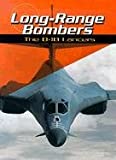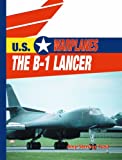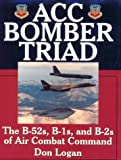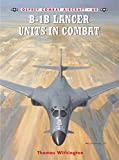The Boeing B-1B Lancer is a long-range, multi-role heavy bomber, which first flew in October 1984 and was first used in combat against Iraq during Operation Desert Fox in 1998. Its predecessor, the B-1A, had been cancelled in 1977.
The B-1B’s “blended wing/body” design with variable-geometry wings and powerful turbofan engines gives it great range and a speed of up to Mach 1.2 (900 mph at sea level).
The wings of the B-1B are swept forward for takeoff, landing, and high-altitude cruise. For high-speed flight, the wings are swept aft.
Modern electronics make the B-1B a formidable weapon: It uses forward-looking and terrain-following radars, along with an indicator showing moving ground targets. To navigate accurately anywhere in the world without help from ground stations, the Lancer uses a Global Positioning System (GPS), inertial navigation, Doppler radar, and a radar altimeter.
The B-1B’s three weapons bays can hold a wide variety of ordnance. The B-1B can carry as many as 84 Mk-82 general purpose bombs, or a smaller mix of Mk-62 naval mines, CBU-87/89 cluster bombs, CBU-97 Sensor Fuse Weapons, or JDAM GPS-guided “smart bombs.” Because it is able to update target information in flight, the B-1B can deliver weapons precisely in a changing combat environment.
In addition to seeing combat in Iraq, the B-1B also flew in Kosovo and Afghanistan. Starting in 2002, the US Air Force began reducing the number of B-1Bs as a cost saving measure.
| Country of Origin | USA. |
|---|---|
| Similar Aircraft | Tu-26 Backfire, Tu-160 Blackjack. |
| Crew | Four: Aircraft commander, Co-pilot, Offensive systems officer, and Defensive systems officer |
| Role | Supersonic, long-range bomber. |
| Armament | ALCMs, SRAMs, bombs. |
| Engines | Four General Electric F-101-GE-102 turbofans of 30,000+ lbs thrust each, with afterburner |
| Wingspan | 137 ft extended forward, 79 ft swept aft |
| Length | 146 ft |
| Height | 34 ft |
B-1B Lancer WEFT Description
| Wings | Low-mounted, variable, swept-back, and tapered with blunt tips. Leading edge root extension. |
|---|---|
| Engine(s) | Four turbofans; two side-by-side pods on each side of the fuselage. Square air intakes under the wings. Four exhausts. |
| Fuselage | Long, slender, pointed nose and tail. Flattened belly except for engine pods. Body widens progressively from the LERX through the exhausts. Stepped canopy. Tapered tail section overhangs the exhausts. Tail cone. |
| Tail | Swept-back, tapered fin with square tip. Flats mid-mounted on fin, swept-back, and tapered with blunt tips. |
Countries which Fly the B-1B Lancer
USA.
B-1B Lancer Manufacturer Web Site
The B-1B Lancer was originally manufactured by Rockwell International.
Rockwell International is now part of Boeing.
Books on the B-1B Lancer

Long Range Bombers: The B-1B Lancers

The B-1 Lancer
An examination of the machinery, specifications, technology, and capabilities of the B-1B with a discussion of the plane’s early development, combat history, and likely future.

ACC Bomber Triad: The B-52’s, B-1’s and B-2’s of Air Combat Command
The United States Air Force is the only Air Force in the world with the ability to project power rapidly, precisely, and globally using strategic bombers. With their global range, large payloads and immediate response capability, Air Combat Command’s (ACC’s) heavy bombers, the B-52H, B-1B, and B-2A are at the core of the USAF’s war fighting strategy and provide both nuclear and conventional deterrent options for the United States. Don Logan’s eighth book for Schiffer Publishing Ltd. presents a roll call of ACC’s bombers with photographs and history of all 208 bombers since joining ACC in June 1992. Also included are all of the bomber’s weapons including gravity weapons, and special weapons such as AGM-84 Harpoon, AGM-86 ALCM/CALCM, AGM-129 ACM, AGM-142 Have Nap, AGM-154 JSOW, and AGM-158 JASSM. This book has over 700 color photographs, 40 line drawings, and 80 unit and special purpose flight suit patches. Over 780 color photographs and 40 line drawings.

